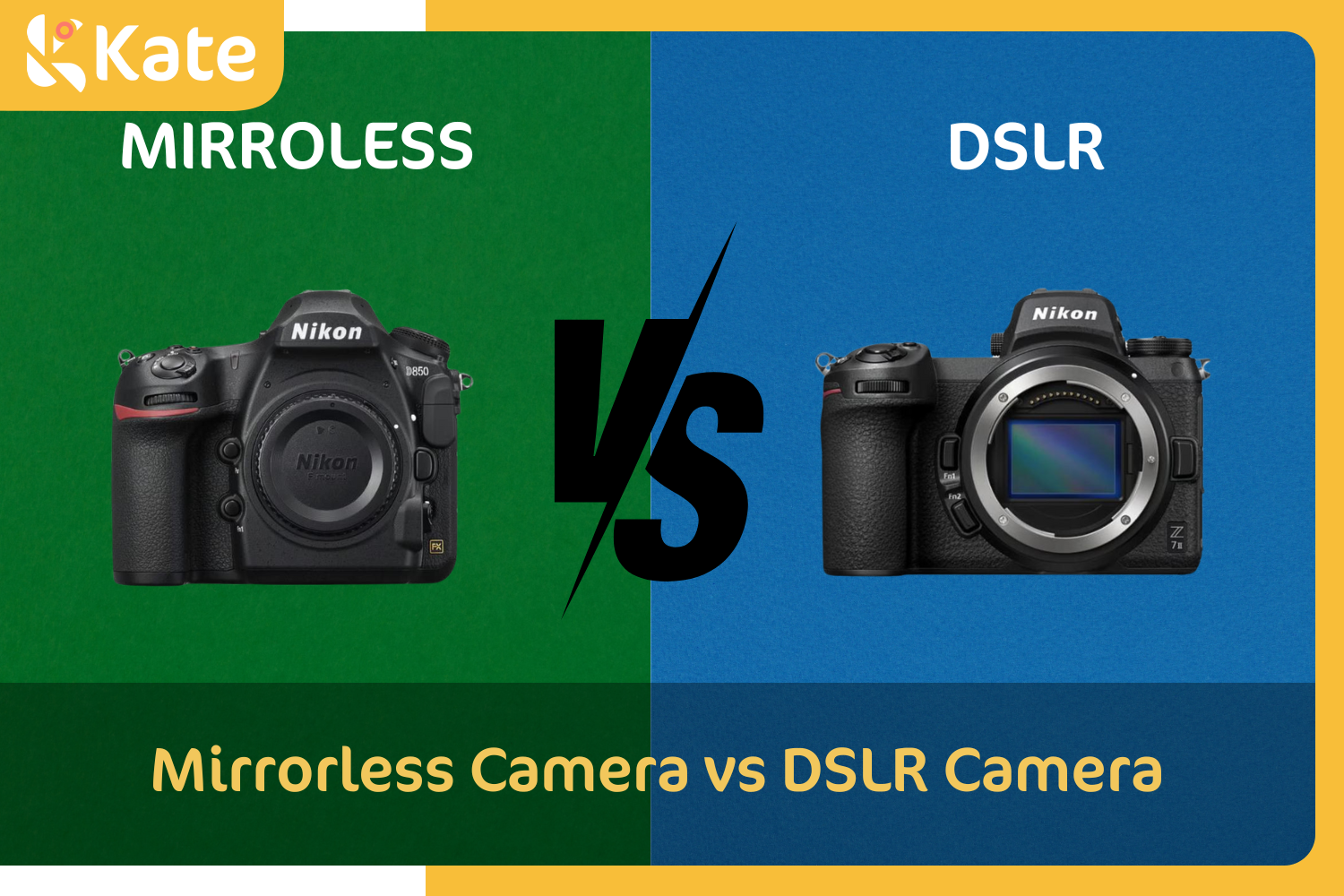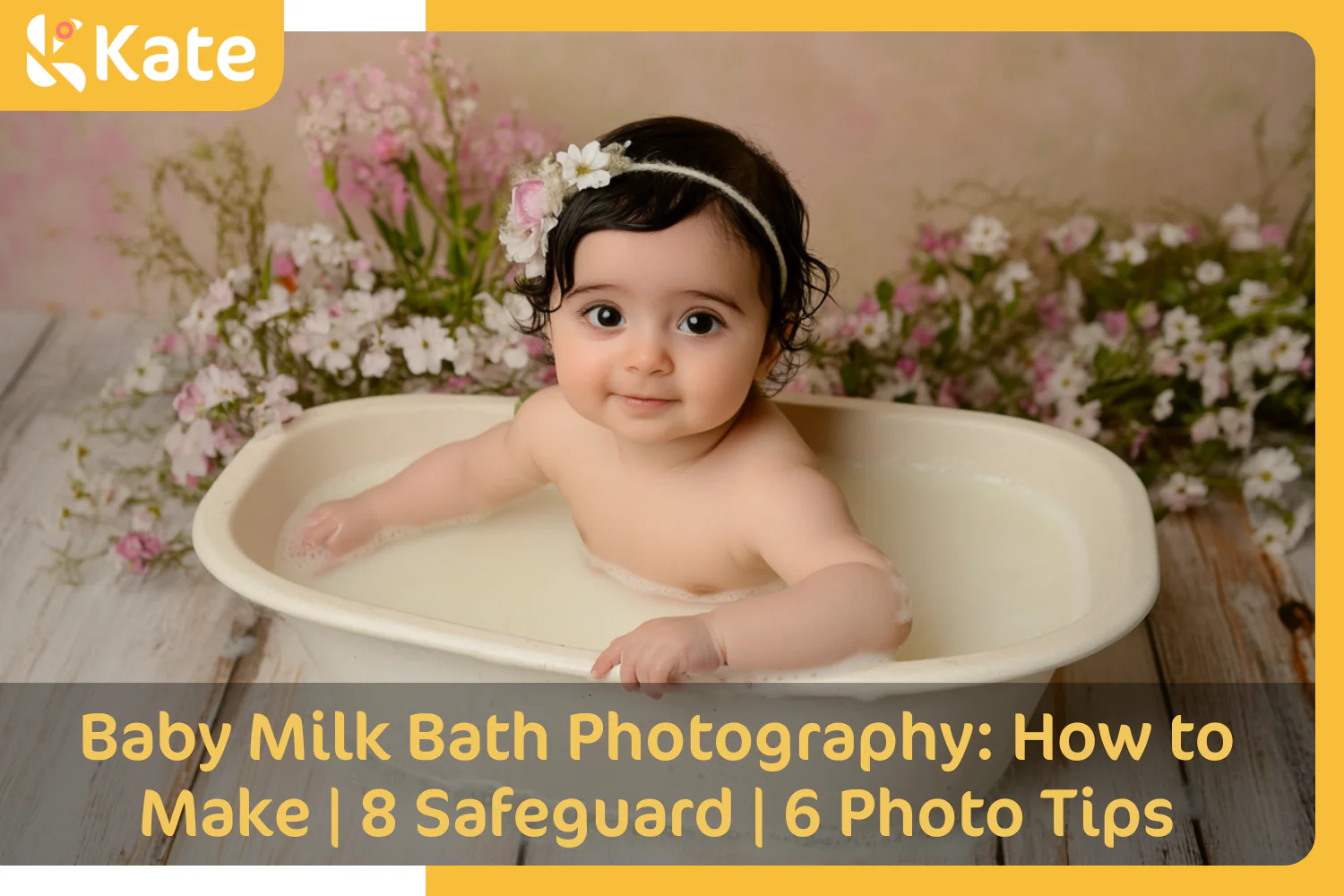Mirrorless Camera vs DSLR Camera

When comparing mirrorless and DSLR cameras, the discussion starts with two key issues. First, the camera industry is moving away from DSLR cameras. Instead, it is investing in the development of mirrorless cameras. In fact, most major manufacturers like Canon, Nikon and Fujifilm no longer make new DSLR camera models, though some existing models are still being produced. This move means that technology in DSLR cameras is not being advanced while mirrorless cameras are increasingly built with the latest innovations.
Secondly, despite all this, DSLR cameras remain a good option, especially for anyone new to photography and for hobbyists on a budget. They are more affordable, offer good image quality and usability, and you have a wide and varied selection of new and used DSLR cameras and accessories. Just keep in mind that your DSLR gear is growing more obsolete all the time.
This page talks about the differences between DSLR and mirrorless cameras, key features of each and how they compare, pros and cons of mirrorless vs DSLR, and tips for choosing a DSLR or mirrorless camera.
- The Key Difference Between a Mirrorless and DSLR Camera
- Comparing Features Between Mirrorless and DSLR Cameras
- Image Quality Comparison
- DSLR Camera Pros and Cons
- Mirrorless Camera Pros and Cons
- Compare the Cost of a Mirrorless vs DSLR Camera
- How to Choose Between a DSLR and Mirrorless Camera
The Key Difference Between a Mirrorless and DSLR Camera
The most significant difference between a mirrorless camera and DSLR camera is the way you see what you’re shooting. DSLR cameras have an optical viewfinder; mirrorless cameras have an electronic viewfinder or no viewfinder.
A digital single-lens reflex camera, or DSLR, uses a mirror and prism system. This optical viewfinder, or OVF, shows you exactly what the lens sees, a true optical path. There’s no digital processing involved. When you depress the button to take a picture, the mirror moves out of the way of the sensor, and the image is captured.
Most mirrorless cameras are equipped with an electronic viewfinder, abbreviated EVF. When light enters the camera, it hits the sensor. And the EVF shows you a digital image of what the camera’s sensor sees. When you take a picture, that image on the sensor is recorded digitally.
It’s important to note that some older mirrorless cameras and entry-level models do not have an EVF. Instead, the image is seen through a rear LCD screen, the same method used by smartphones and some point-and-shoot cameras.
Since mirrorless cameras do not have the mirror system, they are lighter and more compact.
Comparing Features Between Mirrorless and DSLR Cameras
There are several more important ways in which DSLR cameras differ from mirrorless cameras other than the OVF vs EVF view.
There are also differences in the way they autofocus, energy usage and battery life, size and weight, the range of lenses that work with them, lens mounts and how the shutter operates.
Here are details comparing these two camera styles and their features.
|
Feature |
DSLR |
Mirrorless |
|
Battery Life |
Longer-lasting; typically 800–1,200+ shots per charge. |
Shorter battery life; typically 250–400 shots per charge. |
|
Body Size and Weight |
Larger and heavier due to the mirror and pentaprism design. |
Compact and lightweight; easier to carry, especially for travel or street photography. |
|
Lens Mounts and Lens Options |
Vast legacy lens catalog; extensive selection from both manufacturers and third-party brands. |
Growing lens ecosystem; newer mounts often have fewer budget-friendly options but innovative designs |
|
Autofocus: DSLR vs Mirrorless |
Fast phase-detection autofocus, especially through the optical viewfinder (OVF). |
Advanced hybrid autofocus with superior eye, face, and subject tracking; better for video. |
|
Mechanical vs Electronic Shutter |
Mechanical shutter with "mirror slap" can introduce slight vibration and noise. |
Can use electronic shutter for silent shooting and no vibrations; ideal for wildlife or quiet environments. |
Battery Life Comparison
DSLR cameras usually have longer battery life than mirrorless cameras, though battery life does vary depending on the camera model. The gap between mirrorless and DSLR cameras is shrinking in this regard, since newer mirrorless models, especially high-end models, are equipped with longer-lasting batteries.
The reason that mirrorless cameras use up battery power faster is because of the EVF or electronic viewfinder. It requires power that a passive OVF mirror system does not. The EVF continuously processes and displays what it is seeing on a small LCD screen.
A second reason is that some mirrorless cameras have a smaller battery. One of the advantages of mirrorless cameras is their compact size and lighter weight. Using a smaller battery enhances this benefit, but it means that the battery does not last as long.
Finally, advanced features like image stabilization and in-camera processing require battery power.
Body Size and Weight Comparison
A DSLR camera body is heavier than a mirrorless camera body because the DSLR contains the mirror and prism system. As a result, DSLR cameras are also larger and bulkier.
The weight difference varies by model, but on average, a DSLR is several ounces heavier than a comparable mirrorless camera. If you have the camera hanging around your neck for an extended period of time or you’re holding it for a long shoot, the weight difference may eventually impact your comfort.
Lens Mounts and Lens Options
DSLR cameras have longer flange distances, which is the distance between the lens mount and the sensor. This is necessary due to the mirror system within the camera body. Nikon F mounts and Canon EF mounts are two common DSLR lens mount examples.
Without a mirror mechanism, mirrorless camera flange distances are shorter. Common examples of mirrorless camera mounts include Nikon Z, Canon RF, Fujifilm X and Micro Four Thirds (MFT) mounts.
Because DSLR cameras have been around much longer, you have a wider range of lens options. The major manufacturers like Canon and Nikon make an array of compatible lenses. Third party manufacturers like Tamron, Tokina and Sigma also make a variety of lenses that are compatible with current DSLR cameras with the same mount system, often at a lower price.
Because mirrorless cameras are newer, you have fewer lens options. However, because mirrorless is the direction of the industry, and away from DSLR, the number of compatible lenses for mirrorless cameras is growing. And some of these lenses are taking advantage of the short flange distance with compact (pancake lens) design and wider apertures in lenses like the Canon RF 50mm f/1.2 and Nikon Z 58mm f/.95.

Autofocus: DSLR vs Mirrorless
DSLR cameras use phase detection autofocus, or PDAF. It has advantages of being faster and also good in low-light conditions. And it is considered more accurate and better when tracking an object that is moving.
By contrast, mirrorless bodies use contrast detection autofocus (CDAF) or a hybrid of phase detection and contrast detection. CDAF is slower but is quite precise for stationary subjects.
Mirrorless camera hybrid autofocus seeks to achieve the faster, more accurate focusing of PDAF with the precision of CDAF, especially in eye and face detection.
Mechanical vs Electronic Shutter
DSLR cameras use mechanical shutters – an actual shutter that moves the mirror out of the way, which you may hear as the “shutter slap.” It’s quiet, but not silent.
Mirrorless cameras use electronic shutter settings. Image info is gathered by the shutter for the specified exposure time. There are no moving parts, and the action is silent. Electronic shutter operation allows faster shutter speeds than can be achieved with a physical shutter. This gives you the ability to capture subjects moving very fast with reduced or eliminated motion blur. There’s a reduction in camera vibration too, which improves photo sharpness. Finally, you have more speed options with electronic shutters, from slow, long exposures to very fast.
The disadvantages of electronic shutters compared to mechanical shutters include rolling shutter effect as a result of the image information being read slice by slice for a slower readout speed, which can distort subjects moving quickly, light banding or flickering especially in LED and fluorescent light, and potential flash synchronization speed problems in some models.
Image Quality Comparison
Image quality between DSLR and mirrorless cameras has more to do with the specific technologies each model uses. However, it can be generally said that mirrorless camera image quality is better than DSLR image quality because mirrorless cameras are using the latest technologies available while manufacturers are no longer upgrading most DSLR models.
Improved image quality in mirrorless cameras is the result of newer sensor technology such as stacked sensors, BSI sensors and in-camera stabilization. For example, the Sony Alpha mirrorless series has improved noise and dynamic range performance compared to DSLR models. And the Canon R and Fujifilm mirrorless cameras are among those using in-body image stabilization technology, or IBIS, with better image quality in handheld photos.
As noted with the autofocus comparison, new hybrid technology in mirrorless cameras gives you superior eye and face recognition coupled with the benefits of phase detection autofocus. And electronic shutters don’t cause blur the way that mechanical shutters can.
And regarding flange distance, the shorter distance in mirrorless camera lenses like the Nikon Z and Canon RF lenses improve image sharpness and full-picture image quality. Other benefits in terms of image quality include reduced chromatic aberration and wider aperture settings.
Finally, EVF viewfinders are considered less prone to errors in exposure or white balance common to OVF viewfinders.
Here’s a summary chart focusing specifically on **Image Quality Comparison** between DSLR and mirrorless cameras:
|
Aspect |
DSLR |
Mirrorless |
|
Dynamic Range |
Excellent, depending on sensor quality. |
Slight edge due to newer sensors in recent models. |
|
Low-Light Performance |
Comparable; depends on sensor size and lens. |
Often better due to advanced sensor technologies and IBIS. |
|
Sharpness |
Lens-dependent; quality lenses offer great results. |
Newer lens designs optimized for edge-to-edge sharpness. |
|
Color Accuracy |
High, depends on the camera’s image processor. |
High, with real-time preview of color adjustments in EVF or LCD. |
|
Noise Performance |
Comparable at equivalent sensor sizes. |
Slight advantage with modern BSI and stacked sensors. |
DSLR Camera Pros and Cons
DSLR cameras have a proven track record of reliability, but they are being phased out of the market in favor of mirrorless cameras.
While DSLRs are still being sold, few manufacturers are coming out with new, upgraded models. This means that in the years ahead, selection for this type of camera will shrink and so will demand. And eventually finding good lenses and repair parts might become harder too.
Here’s a quick overview of pros and cons, since many of them are already discussed in this article.
DSLR camera advantages:
- These cameras are generally more affordable than mirrorless cameras.
- You have a wide selection (currently) of cameras and lenses.
- The optical viewfinder, OVF, gives you a direct, real-time view of what you’re shooting.
- Battery life is longer because these cameras don’t consume energy with an electronic viewfinder or always-on screen.
- The rugged build of a DSLR makes them durable.
- Larger bodies allow for dedicated controls and ease of use.
DSLR camera disadvantages:
- Focus in the industry has shifted away from DSLRs to mirrorless. For example, neither Nikon or Fujifilm are making new DSLR models, so there’s no innovation, though for now they continue to produce existing models.
- Larger bodies are bulky and weigh more than mirrorless models.
- The mechanical mirror systems can create camera shake, albeit small, and they make a little noise, which can send a wildlife subject scurrying away.
- The live view autofocus is slower to what you get with a mirrorless camera.

Mirrorless Camera Pros and Cons
Here are the reasons the manufacturers are switching research and development to mirrorless cameras. Plus, the potential disadvantages to consider are included.
Mirrorless camera advantages:
- These cameras deliver superior autofocus, especially models with hybrid autofocus like the Sony a7 IV, Canon EOS R5 and Nikon Z6 III.
- Electronic shutters are silent – so there’s no “click” when shooting a wedding or nearby wildlife.
- The shorter flange distances produce superior sharpness across the image and allow for wider alternative settings.
- The build of a mirrorless camera is lighter and more compact.
- The EVF or electronic viewfinder delivers real-time image previews, so you can adjust white balance, exposure and other settings to more easily get the shot you want.
- IBIS, in-body image stabilization, reduces the effect of shake when shooting handheld.
Mirrorless camera disadvantages:
- Mirrorless cameras have a higher average cost than DSLR cameras.
- Battery power gets used up faster, so have a spare or two with you.
- The selection of lenses for mirrorless cameras is smaller, though it is growing.
- If you’re new to mirrorless technology, the learning curve can be daunting at first.
- Older mirrorless camera models experience EVF lag and the electronic shutters can produce flickering or light banding – however, both issues are becoming less common in new models as technology improves.
Compare the Cost of a Mirrorless vs DSLR Camera
When you compare the cost of a DSLR vs mirrorless camera, you’ll find that mirrorless cameras are generally more expensive.
- Entry-level cameras:The cost of affordable DSLR cameras is from $450 to $900. The cost of the most affordable mirrorless cameras is $525 to $1,000 or slightly more.
- Mid-level cameras:DSLR prices in this range are $850 to $1,600. Midrange mirrorless cameras cost $1,100 to $2,000.
- Professional cameras:DSLRs start around $2,100 and can cost $6,000 or a little more. Pro mirrorless camera cost is $2,700 to $7,000+.
|
Quality |
DSLR Camera Cost |
Mirrorless Camera Cost |
Performance |
|
Entry-level |
$450 - $900 |
$525 - $1,050+ |
Beginner-friendly features; compact and basic performance. |
|
Mid-level |
$850 - $1,600 |
$1,100 - $2,000+ |
Enhanced performance, additional manual controls, improved image quality. |
|
Professional |
$2,100 - $6,000+ |
$2,700 - $7,000+ |
High-resolution sensors, robust builds, optimized for advanced photography/videography. |
*Costs are for the camera body only. Lenses and accessories are additional costs.
Compare the Cost of DSLR Lenses and Accessories to Mirrorless Lenses and Accessories
You will pay less for DSLR lenses and accessories for several reasons. Your selection of DSLR equipment is greater and includes cheaper, third-party lenses that can still be quite good. And since DSLR gear has been around longer, the prices have stabilized. Finally, there’s a larger market of used lenses and accessories, so you can find good used equipment at competitive prices.
Mirrorless equipment costs more because it features newer technology, and some of the newest comes with “bleeding edge” prices. While the availability and selection of mirrorless equipment is expanding, there are fewer affordable third-party options and a small used market.
How to Choose Between a DSLR and Mirrorless Camera
Here are tips for beginners, enthusiasts and even photographers who shoot professionally for deciding between a DSLR and mirrorless camera purchase.
Start with a budget: If the budget is tight, you’ll find good used DSLR equipment for sale. Buying good used equipment is a great option for those who are new to photography and aren’t sure they are going to stick with it. Plus, it’s hard to go mirrorless on a small budget.
Consider size and weight: Mirrorless cameras are lighter and more compact. This makes them better if your photo sessions are long, you shoot handheld a lot, you carry your gear long distances, or want to pack the camera in a travel bag.
Get more batteries if you choose mirrorless: Carrying charged, extra batteries is smart regardless of which you choose. However, you’ll go through each battery 50% to 70% faster with a mirrorless.
Choose mirrorless if you mostly use autofocus: Autofocus on these cameras, especially with hybrid technology, offer superior tracking and eye/face recognition.
DSLR lens selection is better, but the gap is narrowing: You have more options with DSLR and they are generally more affordable, especially legacy lenses that are no longer being improved or even produced.
You might get left behind with DSLR technology: All camera manufacturers are shifting their research and development to mirrorless cameras. If you want to “future proof” your photography, choose mirrorless.
In summary, if you’re a beginner or have a small budget, choose DSLR equipment. DSLRs are still used widely by enthusiasts and pros. Prices for new and used equipment are lower, and there’s a lot of good used gear available. You can learn the basics of photography at a lower cost, and your next camera and lenses can be mirrorless if you decide to stick with photography or upgrade your game.
Serious enthusiasts without budget constraints should do what most pro photographers are doing and choose mirrorless cameras and gear. It’s the future for now, while DSLR technology is rapidly becoming the past.









 Boho
Boho










